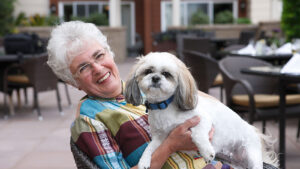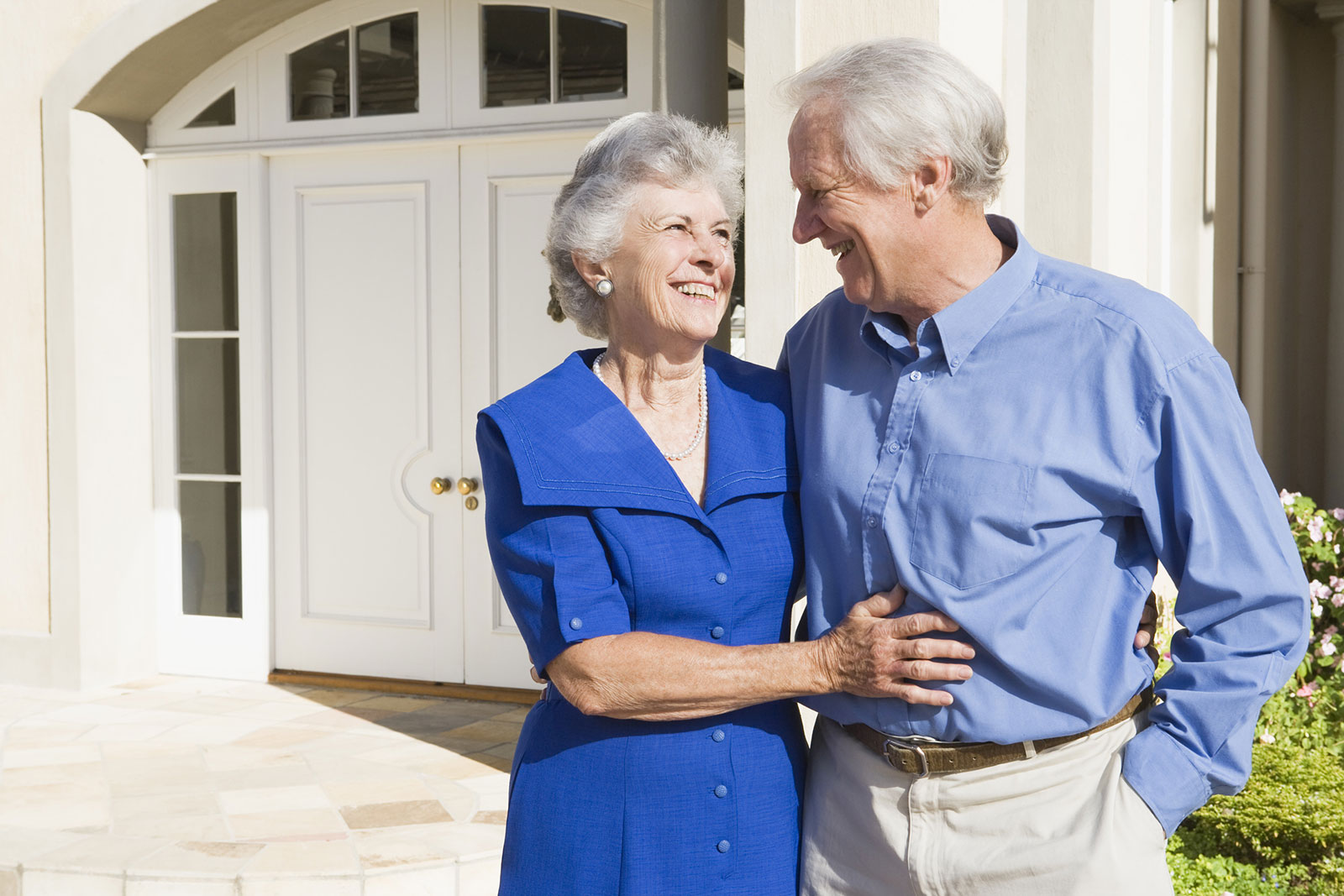Suzanne: And welcome everyone to Answers for Elders Radio Network. And we are here on our very first weekend welcoming so many amazing cities that are joining this program. We have so much important information to share about aging, about um why it’s important to be educated and prepare upfront and things we can do to make our quality of life in our aging years much better and we’re not going to disappoint you today because we are so honored to have national Aging in Place expert, Dr Bjerke, and Jill is amazing, what can I say? I have known her for a long time. She’s been an aging in place, clutter elimination and downsizing expert for over 17 years. And she is the CEO and owners of an app that we’re all going to hear about today that helps you survey your home to make it more aging in place friendly. What are things that could be potential fall hazards, things like that. And so Dr Jill, we’re so excited to have you on answers for elders. Welcome.
Jill Bjerke: Thank you, Suzanne. It is an absolute pleasure to be here and speak with you.
Suzanne: Well, thank you. I feel so mutually honored to have you. It’s interesting, Jill, I was in preparing for today’s interview. We get phone calls all the time for obvious reasons. Right. And so when we get phone calls from families, um, so often it’s after a fall, it’s a family that’s in crisis that they’ve been dealing with a senior loved one and they’ve taken a bad fall and, they’re in their seventies and all of a sudden they’re getting this dismal news as well broken hip. It’s gonna take a while to heal because you’re older, your bones are more brittle. And, then the other side of it is, I’ll hear stories of, well, you know, mom broke her hip about four years ago and she’s never been the same since. I’m sure you’ve heard that story a lot. So, obviously prevention in the the boomers — right now, there are 10,000 people a day turning the age of 65. We’re all getting to that point where we need to take a look at our own living space. We want to stay in our home for as long as possible. So there’s this term out there that people may not understand Jill and tell us a little bit about the term when we say aging in place. What does that mean?
Jill Bjerke: Aging in place is not what people think it is. It’s not “I’m just gonna stay in my home forever.” The problem is that we change, our homes don’t. That means we need to step back and take a look at what’s going on in our lives. And to me, we need to look at our finances, transportation, our health, socialization. Think about what am I gonna do if I can’t drive, and your public transportation? Do I have transportation in my town that I can get where I need to go? Is my health good enough for me to remain at home, or my partner to remain at home, or am I going to have a condition that’s going to need some attention in the future, and remaining at home may not be the best option for me. And socialization is one of the downsides of aging in place, because you can become very isolated if you can’t get to where you can socialize with other people. So those are some of the really important factors that we need to think about in addition to staying in my home as long as I can.
Suzanne: I’m really glad you brought that up because so many seniors hang on to the family home because of the memories, but it may not necessarily support them. There may be stairwells that could be not conceivable right now. They’re not getting proper grooming because maybe they’re not able to get up to the the real bathing area that they have there, you know, they’re moving things just to stay in an albatross of a home for them. Um, that’s not serving them. And, and so, you know, part of that is to think about your quality of life. And so much happens to, as we get older, we’ve got definitely a lot of issues when it comes to maintenance repairs, just the overwhelm of that. And so obviously there’s a whole factor of downsizing. Is it not?
Jill Bjerke: Yeah. And, and it really is a very, very important factor and something that we have to think about because if we stay at home, we’re still gonna have taxes, we’re still gonna have maintenance, we’re still gonna have to worry about who’s going to shovel the walk. What if we can’t get outside? So there are still a lot of other factors to think about, and downsizing goes hand in hand with aging in place.
You need to look at where you’re living now. Is it a safe place for you to be, is the house too big, and it takes way too much time to clean, and you have way too many rooms? Or maybe you have stairs and you shouldn’t have stairs, what we call zero-threshold entries, which is basically no-step entries. Your washer and dryer, are they in the basement? Maybe they shouldn’t be, maybe they should be on the first floor with you. Is your dishwasher raised, so that you can reach it better? There are a whole host of things…
Suzanne: Lower cabinets, and it doesn’t mean that you can’t do some modifications to a new place. And that’s the nice thing about thinking about when you let go of that family home. I know downsizing. It’s like I’ve heard people say, well, I know it’s my, I’m living in this house that doesn’t serve me anymore. And I always say, you know, it’s too much to deal with, to stay, but it’s too much to deal with, to move. People feel overwhelmed in this process. Why do you think that is?
Jill Bjerke: I think it’s because they’ve lived there so long that they just kind of don’t see really what is accumulated over time. I’ve had clients say things like, well, I need to downsize because I don’t want to leave all this stuff to my kids, which is an amazing thing. I think that’s a wonderful thing. And I hear people say, I don’t know where to start. Well, I can see why. But if you break it down into manageable pieces, you do two drawers at a time, or part of a closet at a time, and you sort things, you decide what you’re, keep going to keep, what you’re going to sell, what you’re going to recycle what you’re going to give away, makes it a lot easier.
Now, along with that comes with some things that have memories attached to them. And one of the things people don’t realize is they are not attached to that thing, they are attached to the memory that that thing brings to them. So finding another way based on, you know, if you are going to downsize, you don’t have the room for some of these things, possibly taking a picture of it, so you still have that image, or another thought is finding someone who will love that piece as much as you do, when pianos go to girls and boys clubs. I’ve given entire sets of China to churches. So there are ways to manage getting rid of some of your things in a very peaceful way. And that’s what it should be. It shouldn’t be full of stress, it should be peaceful.
Suzanne: And it’s interesting you say that because so many of our kids today, they don’t want the China, they don’t want the crystal. They don’t want the kind of stuff that we wanted when we were younger. And I’m sitting here right now with my mom’s China and crystal. I have no idea what’s going to happen to it when I’m gone, because nobody in my family wants it.
So there’s a lot of things that we need to consider and certainly in the process, we may have things in our home that are huge accident hazards that we don’t even realize. I just had a friend tell me about bumping something in her kitchen and for some reason, it caused her to go off balance and she fell and fell right on top of the dishwasher, which was open. Thank goodness the rack wasn’t there, but she broke off the dishwasher door with her weight and, guess what happened, she was completely down on the floor and then couldn’t get up, because she was so hurting and this is a woman that’s my age, she’s in her mid sixties. So these things happen and certainly making sure that we have a space in our life where we can live safely. And when you talked about raising the dishwasher, I went, well, see, that would have solved that, and those are things that we can certainly do.
So Dr Jill, um, I know we’re going to talk this hour, but before we leave, I’m just going to briefly tell our audience… Dr Jill has a brand new app out, and we’re gonna talk a lot about how each one of you can take this app, and it is designed to help you survey your home to make sure that you can provide the most safest living area possible for yourself. And Dr Jill and I, we will be right back right after this.












